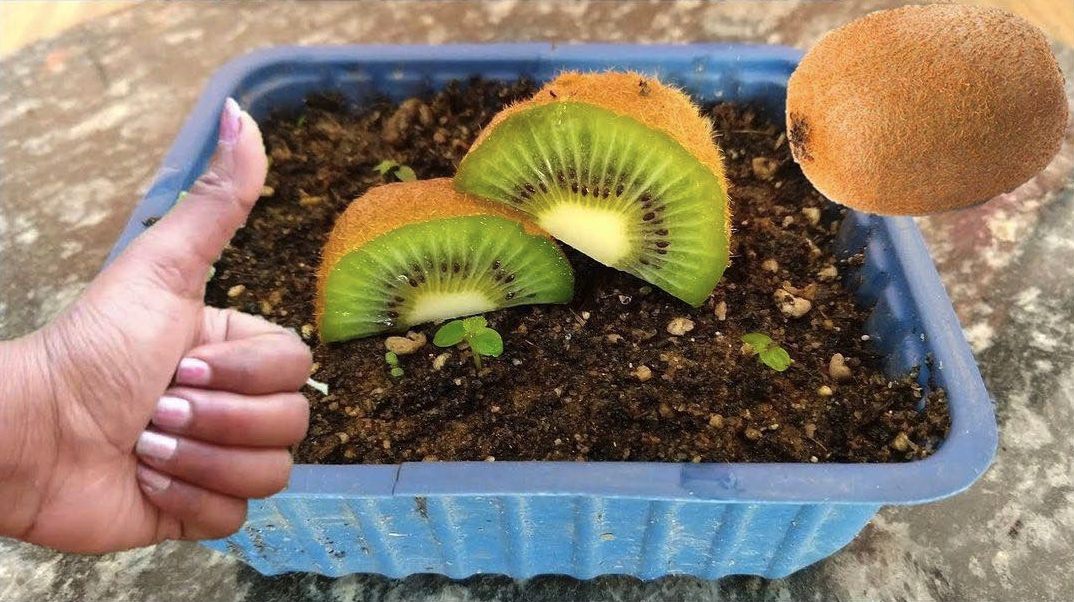How to grow a young kiwi tree in a pot


Embarking on the journey of growing a kiwi tree from a kiwi seed can be both enjoyable and fulfilling. However, it's essential to bear in mind that the kiwi fruits you find in stores may not always yield viable seeds. Furthermore, even if they do, the resultant kiwi tree might not mirror the traits of its parent plant. Nevertheless, if you possess a kiwi fruit with viable seeds, here's your guide to cultivating a young kiwi tree in a pot.
Step 1: Extracting the Seeds
- Cut open a ripe kiwi fruit and extract the seeds.
- Rinse the seeds under cold water and allow them to air dry on a paper towel for several days.
Step 2: Germinating the Seeds
- Kiwi seeds require stratification for germination. Place them in a damp paper towel or sphagnum moss and seal them within a plastic bag in the refrigerator for 3-4 weeks.
- Regularly check the seeds and ensure the paper towel or moss remains moist.
Step 3: Planting the Seeds
- After stratification, plant the seeds in a small pot filled with a blend of potting soil and perlite.
- Bury the seeds about 1/4 inch deep in the soil and water them gently.
- Cover the pot with plastic wrap to create a mini-greenhouse effect and position it in a warm, well-lit spot.
- Keep the soil consistently moist, avoiding waterlogging.
Step 4: Transplanting the Seedlings
- As seedlings emerge in a few weeks, transplant them to a larger pot.
- Choose a pot with dimensions of at least 18-24 inches in diameter and 24 inches deep.
- Fill the pot with a mixture of potting soil, compost, and perlite.
Step 5: Caring for Your Kiwi Tree
- Kiwi trees thrive on ample sunlight for growth and fruit production. Place the pot in a sunny area or consider using grow lights if needed.
- Maintain consistent moisture in the soil, ensuring it's not excessively saturated.
- Fertilize the tree with a balanced fertilizer every 4-6 weeks during the active growing season.
Step 6: Providing Essential Support
- Recognize that kiwi trees are vines, necessitating vertical support.
- Introduce a trellis or stake in the pot and gently guide the kiwi vine as it ascends.
Step 7: Thoughtful Pruning
- Engage in pruning during late winter or early spring to eliminate dead, damaged, or diseased branches.
- Remove lateral branches originating from the plant's base.
Step 8: The Fruitful Harvest
- Kiwi trees generally yield fruit in their second or third year of growth.
- Harvest the fruit when it's fully ripe and exhibits a slightly soft texture upon gentle touch.

Evaluating Seed Viability
Determining if a kiwi fruit bears viable seeds involves a few key considerations:
- Opt for ripe kiwi fruit, typically possessing a slightly soft texture when gently pressed.
- Inspect the seeds: Choose plump, well-developed seeds rather than shriveled ones.
- Conduct a germination test: Dampen a paper towel or sphagnum moss, place the seeds atop, and enclose them with plastic wrap or within a plastic bag. Keep them in a warm, well-lit location and monitor for germination signs. Sprouting within a few weeks indicates viable seeds suitable for planting.
Final Thoughts
It's important to acknowledge that while viable seeds from a kiwi fruit may not guarantee identical fruit outcomes, growing a kiwi tree from seed remains an engaging and gratifying endeavor. The journey of nurturing your own kiwi tree presents a remarkable learning experience and a source of pride.
Source: https://grandmastricks.com
DISCLAIMER: THIS WEBSITE DOES NOT PROVIDE MEDICAL ADVICE The information, including but not limited to, text, graphics, images and other material contained on this website are for informational purposes only. The purpose of this website is to promote broad consumer understanding and knowledge of various health topics. It is not intended to be a substitute for professional medical advice, diagnosis or treatment. Always seek the advice of your physician or other qualified health care provider with any questions you may have regarding a medical condition or treatment and before undertaking a new health care regimen, and never disregard professional medical advice or delay in seeking it because of something you have read on this website.
